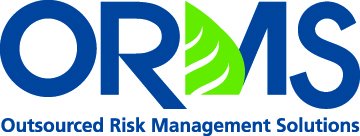A Phase I Cautionary Tale
If your institution does commercial real estate lending like mortgage services, the Phase I environmental site assessment (ESA) is a critical element of your overall risk management program. The Phase I typically involves a review of property records, a site inspection, and interviews with current owners and occupants, as well as local government officials and nearby property owners.
Soil sampling may or may not be part of this due diligence phase, but you should still retain a qualified and experienced environmental professional to perform the Phase I. Environmental professionals are subject to rigorous industry risk management standards, and are experienced in spotting red flags, such as past contamination either onsite or at adjacent or nearby properties that may warrant additional scrutiny.
Not sure if the proper use of a Phase I ESA is a critical piece of your CRE lending due diligence? One recent high-profile case highlights why it should be. The owners of a commercial property applied for a multi-million-dollar mortgage. After conducting its normal due diligence, the lender approved the loan and disbursed the funds.
However, shortly after closing the EPA investigated the site, and radioactive readings were discovered. Ultimately, the EPA determined the property had legacy radioactive contamination due to an adjacent property’s prior use as a hazardous waste dumping site. The agency demanded cleanup, and the borrower ended up defaulting on its loan due to the expense.
Although the bank had retained an environmental consulting firm to conduct a Phase I ESA as part of its normal due diligence, the firm’s review failed to uncover the historical record of the adjacent property, and also missed the fact that the subject property was once part of a larger parcel that included the contaminated property. When the borrower defaulted on the loan, the lender sued the consulting firm for malpractice. Unfortunately for the bank, the court threw out the lawsuit due to a three-year statute of limitations. (For a deep dive into the specifics of this case, check out Schnapf Environmental Law’s excellent discussion.)
Bottom line, when properly utilized the Phase I is a crucial tool for uncovering potential environmental risks, such as property contamination. Here are some tips for getting the most out of your Phase I:
- Retain a professional, experienced environmental consulting firm: It is uncertain from the court filing the specific reasons of how the consulting firm missed the presence of hazardous material at the adjacent site, or the historical record of the subject site. In any event, make sure you engage an experienced firm to conduct the due diligence.
- Thoroughly review the Phase I, before granting the loan: Pay close attention to the sections covering historical operations, current waste generation, property uses, and the presence of vapor intrusion. Also consider hiring an impartial third-party expert to conduct the reviews of any environmental reports ordered or provided.
- Ensure the assessment is performed in accordance with the latest Phase I ESA standard (ASTM E1527-13). Note this latest standard has been in place since 2013, and is currently up for renewal, with a deadline of 2021. Expect some changes to the standard over the next couple of years.
- Be willing to request further due diligence, if any red flags are found. No one wants to hold up a CRE loan closing, but it is much better to take your time and be confident there are no unknown environmental issues on a property, rather than rushing through and being left holding the bag. Not only does this approach help protect the bank, but it also provides your borrowers who will ultimately own the property with valuable information.
While mistakes can always happen, a more thorough review of the property may have meant the difference between taking a pass on a risky CRE loan, and absorbing millions in loan losses.
